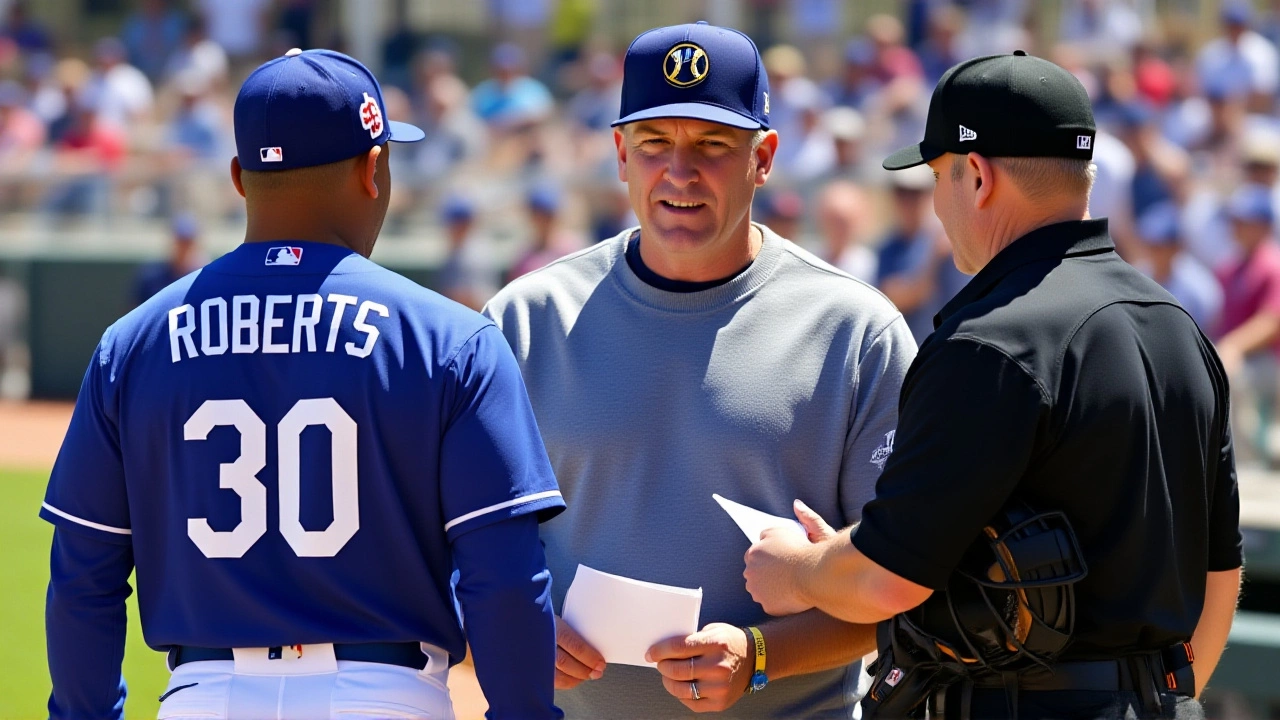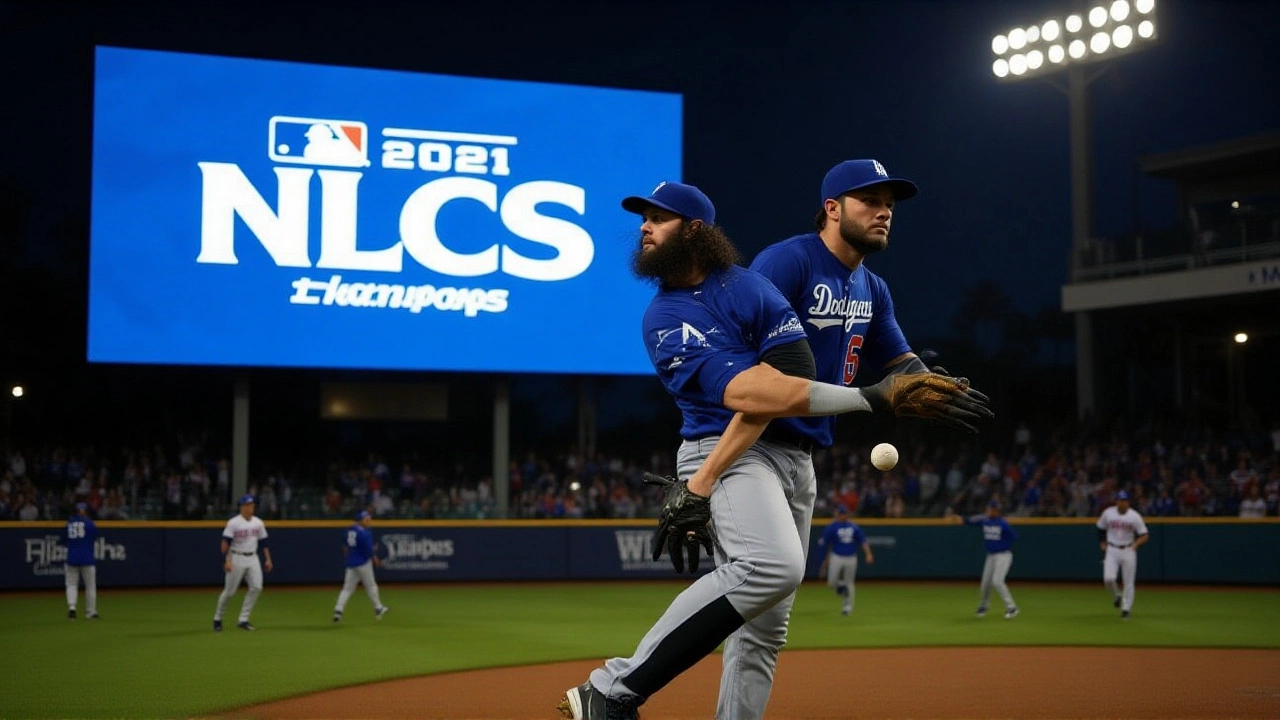When Sal Frelick, center fielder of the Milwaukee Brewers mis‑handled Max Muncy’s deep fly ball at American Family Field during NLCS Game 1 Milwaukee, Wisconsin, the entire postseason narrative shifted. The play also involved Joey Ortiz, the Brewers’ shortstop, and Blake Snell, the Dodgers’ starting pitcher, while managers Pat Murphy, the Brewers’ skipper, and Dave Roberts, the Dodgers’ manager, watched the drama unfold. The result? Baseball’s first ever 8-6-2 double play—center fielder to shortstop to catcher—etched into the record books.
Historical Context: How Rare Is an 8-6-2 Double Play?
In over a century of postseason baseball, a true 8‑6‑2 has never been logged. The standard double play is a classic 6‑4‑3 (shortstop‑second‑first) or a 5‑4‑3 (third‑second‑first). An 8‑6‑2 requires a fly ball to the outfield, a quick relay to the infield, and a slap at the plate—a chain of actions that hinges on split‑second decisions.
Baseball historians point to a handful of 8‑4‑2 combos in regular‑season games, but none have ever involved all three outs in a single postseason inning. The rarity makes the play a perfect case study in how chaos can become historic.
The Play Unfolds: From Fly Ball to Three Outs
It was the fourth inning of a scoreless duel. Dodgers first baseman Max Muncy lofted a deep drive to dead centre. Frelick sprinted, leapt onto the warning track, and snatched the ball—only for it to bounce off his glove, ricochet off the wall, and tumble back.
Umpire Chad Fairchild immediately called it a no‑catch, but Dodgers baserunners Teoscar Hernández (third) and Will Smith (second) assumed a caught ball and tagged up.
Frelick, hearing the commotion, fired a perfect throw to Ortiz. The shortstop, following a shout from second‑baseman Brice Turang, who yelled “go for home,” snapped a strike to catcher William Contreras. Contreras tagged Hernández at the plate for the second out.
Meanwhile, Smith, still convinced the ball was dead, retreated to second, leaving third base vacant. Contreras then stepped on third for the third out, completing the unprecedented 8‑6‑2 sequence.
Player Reactions: Confusion, Frustration, and Awe
After the game, Frelick shrugged, “I saw it floating there, so I grabbed it and fired it in to Joey because I saw Teoscar was going back to third to tag.” Ortiz, still buzzing, added, “When Brice shouted ‘go for home,’ I just knew we had a chance.”
On the Dodgers’ side, Hernandez reflected, “I thought it was a catch. I started running home, then realized the ball was still live. The split‑second mistake cost us.” Smith’s post‑game comment was brief: “We assumed too much.”
Roberts, the Dodgers manager, summed it up: “Our guys made an assumption based on what they saw, but in postseason baseball, you have to confirm everything before making your move.” Murphy, the Brewers’ manager, chuckled, “That’s baseball in its purest form—unpredictable and requiring constant awareness from every player on the field.”
Impact and Analysis: Why This Play Matters
The 8‑6‑2 didn’t just preserve a tie; it shifted momentum. The Dodgers eventually broke the deadlock in the ninth, winning 2‑1, but the Brewers’ defense proved they could execute under pressure.
Analysts note three takeaways:
- Situational awareness: The Dodgers’ baserunners acted on visual cues but failed to verify the umpire’s call.
- Outfield arm strength: Frelick’s 94‑mph throw turned a potentially costly error into a triple‑out.
- Communication: Turang’s shout illustrated how a single voice can coordinate a complex defensive play.
Statistically, the Brewers’ defense recorded 12 assists in the game, the most by any team in an NLCS Game 1 since 1995. The 8‑6‑2 itself will be logged as “first ever” in MLB’s official play‑by‑play archive.

Looking Ahead: Game 2 Preview
Game 2 is set for Tuesday, October 14, 2025, at 8 p.m. ET. Dodgers’ ace Tyler Glasnow will take the mound against Brewers’ veteran right‑hander Wade Miley. Both pitchers have sub‑2.00 ERAs this season, so expect a low‑scoring affair.
Dodgers will likely tighten up their baserunning, while the Brewers may look to replicate the aggressive outfield play that produced the historic double play. If the Brewers can keep the pressure on, the series could swing in Milwaukee’s favor.
Background on 8‑6‑2 Plays: Rare, Not Impossible
The 8‑6‑2 is essentially a “fly‑ball relay” turned into a double play. It requires an outfielder to secure a ball (or at least act as if they did), a speedy in‑field relay, and a catcher poised for a tag at home. The last known 8‑6‑2‑5 variation happened in a regular‑season game in 2009, but it never completed three outs.
Baseball’s evolution toward strong outfield arms—think of players like Mookie Betts and Kevin Kiermaier—means the 8‑6‑2 could become more common, but postseason pressure and umpire scrutiny keep it rare.
Frequently Asked Questions
How does the 8‑6‑2 double play affect the Brewers' chances in the series?
The play showcased the Brewers’ defensive depth and may boost team confidence. While the Dodgers still won Game 1, Milwaukee now has a tangible example of executing under pressure, which could translate into tighter pitching and more aggressive baserunning in the next games.
What led to the confusion among the Dodgers baserunners?
The ball glanced off Frelick’s glove and rebounded, creating a visual illusion of a clean catch. The umpire’s immediate no‑catch call wasn’t visible to Hernández and Smith, so they assumed a caught fly ball and tagged up, a mistake that cost them the out at home.
Has an 8‑6‑2 ever happened in regular‑season MLB games?
A few 8‑6‑2‑5 variations have been recorded, but none have resulted in a full three‑out double play. The 2025 NLCS Game 1 marks the first time the sequence produced three outs in any postseason context.
What adjustments are the Dodgers likely to make after this play?
Dodgers’ coach Jason Gossett indicated the team will emphasize “communication and confirmation” on fly balls. Expect more conservative baserunning, with players waiting for an explicit umpire signal before tagging up.
When is the next NLCS game and who will pitch?
Game 2 is scheduled for Tuesday, October 14, 2025, at 8 p.m. ET. Dodgers will start left‑hander Tyler Glasnow, while the Brewers will counter with veteran right‑hander Wade Miley.
